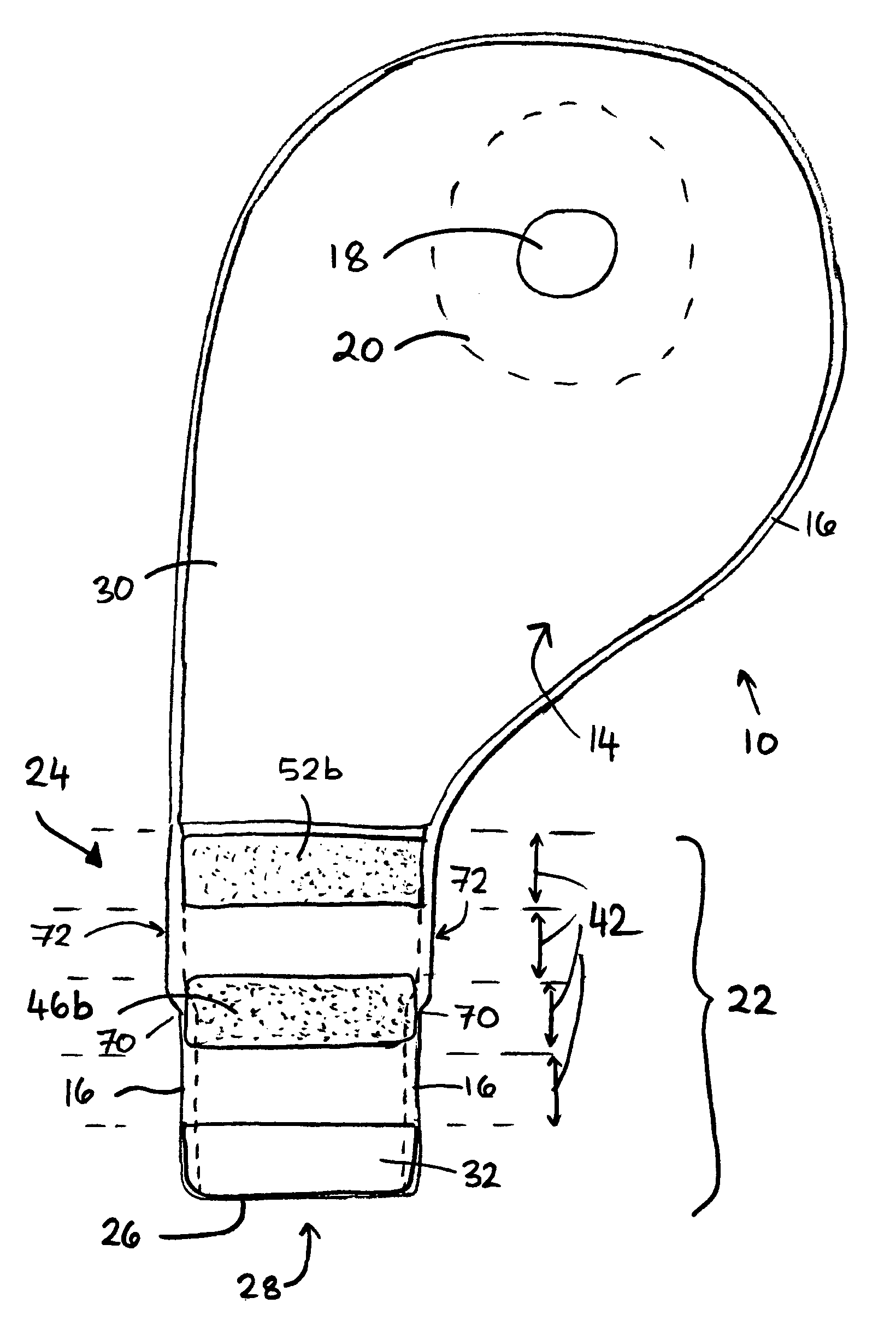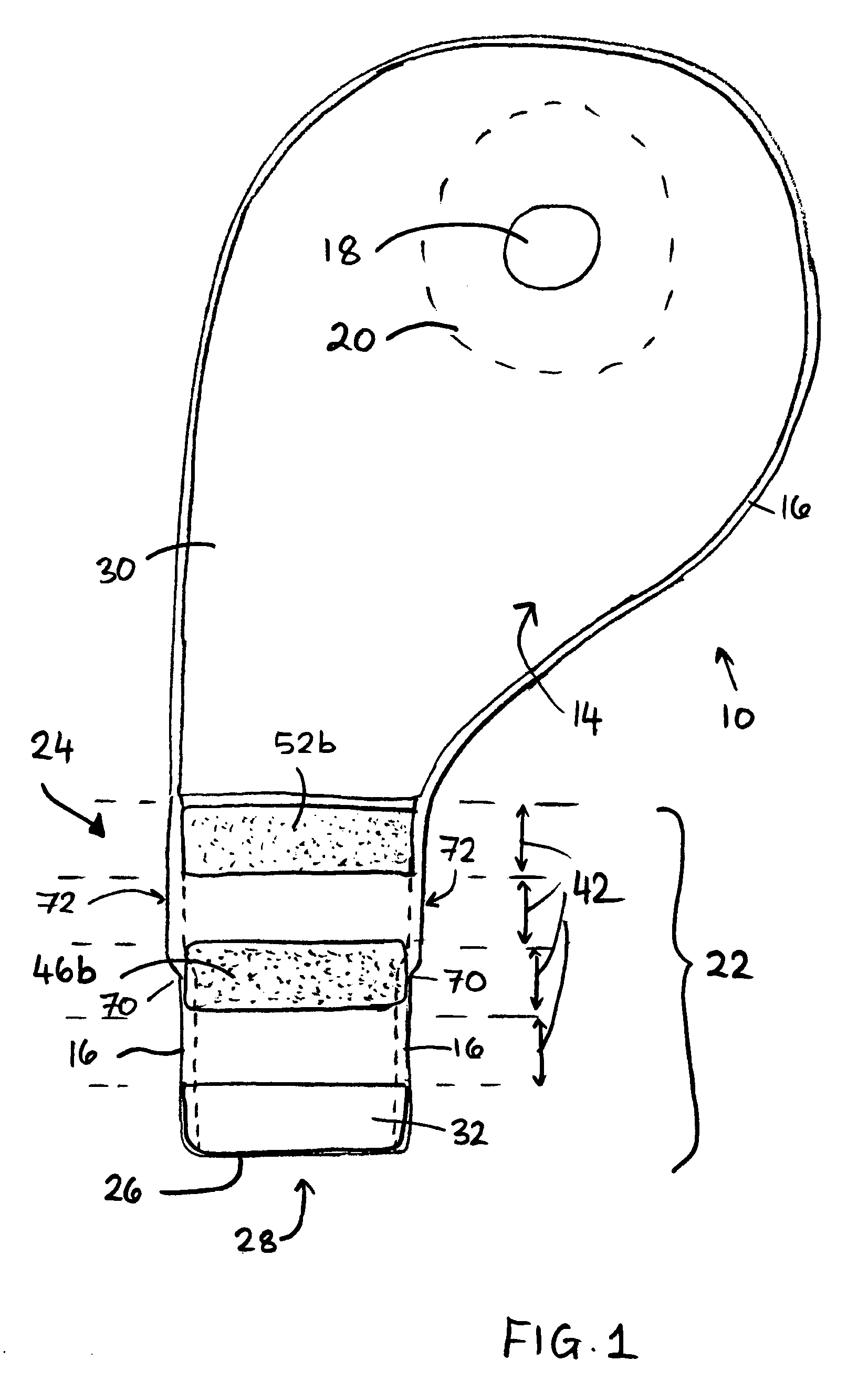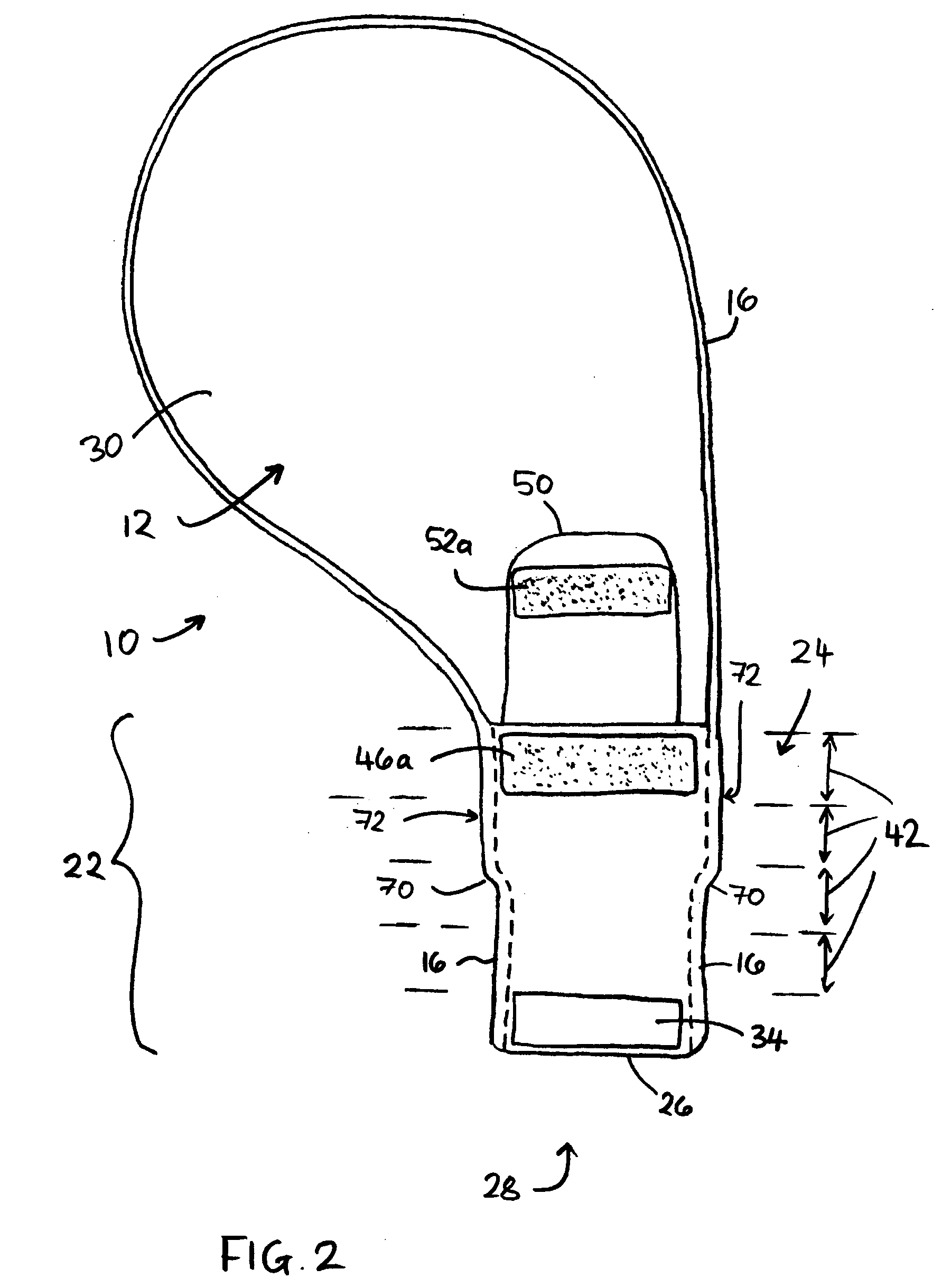Pouch for collecting human waste
a technology for human waste and pouches, applied in the direction of flexible container closures, transportation and packaging, sacks, etc., can solve the problems of surface sticking together, creases inhibiting reinforcing members, leakage in the region of creases, etc., and achieve the effect of more control of the outflow or drainage of pouch contents
- Summary
- Abstract
- Description
- Claims
- Application Information
AI Technical Summary
Benefits of technology
Problems solved by technology
Method used
Image
Examples
Embodiment Construction
[0062]Referring to FIGS. 1 and 2, a drainable ostomy pouch 10 is formed generally by a front wall 12 and a rear wall 14 of flexible impermeable plastics film, welded together around a common periphery 16. Many suitable materials for the walls 12 and 14 are known in the art. For example, the material may be a laminate of one or more layers of ethylene vinyl acetate (EVA) and a barrier layer, for example of poly vinylidene chloride (PVDC).
[0063]The rear wall 14 of the pouch (FIG. 1) has an entrance aperture 18 in its upper region for receiving human waste from a wearer's stoma. In the illustrated embodiment, the pouch may be intended (although not exclusively) as an ileostomy pouch for receiving semi-solid ileal fluid from a wearer's ileal stoma. The pouch 10 is securable to the peristomal area of the wearer's body by a body fitment, indicated generally at 20, and including a wafer or pad of hypoallergenic skin adhesive (not shown). The pouch 10 may be of a so-called “one-piece” type ...
PUM
 Login to View More
Login to View More Abstract
Description
Claims
Application Information
 Login to View More
Login to View More - R&D
- Intellectual Property
- Life Sciences
- Materials
- Tech Scout
- Unparalleled Data Quality
- Higher Quality Content
- 60% Fewer Hallucinations
Browse by: Latest US Patents, China's latest patents, Technical Efficacy Thesaurus, Application Domain, Technology Topic, Popular Technical Reports.
© 2025 PatSnap. All rights reserved.Legal|Privacy policy|Modern Slavery Act Transparency Statement|Sitemap|About US| Contact US: help@patsnap.com



